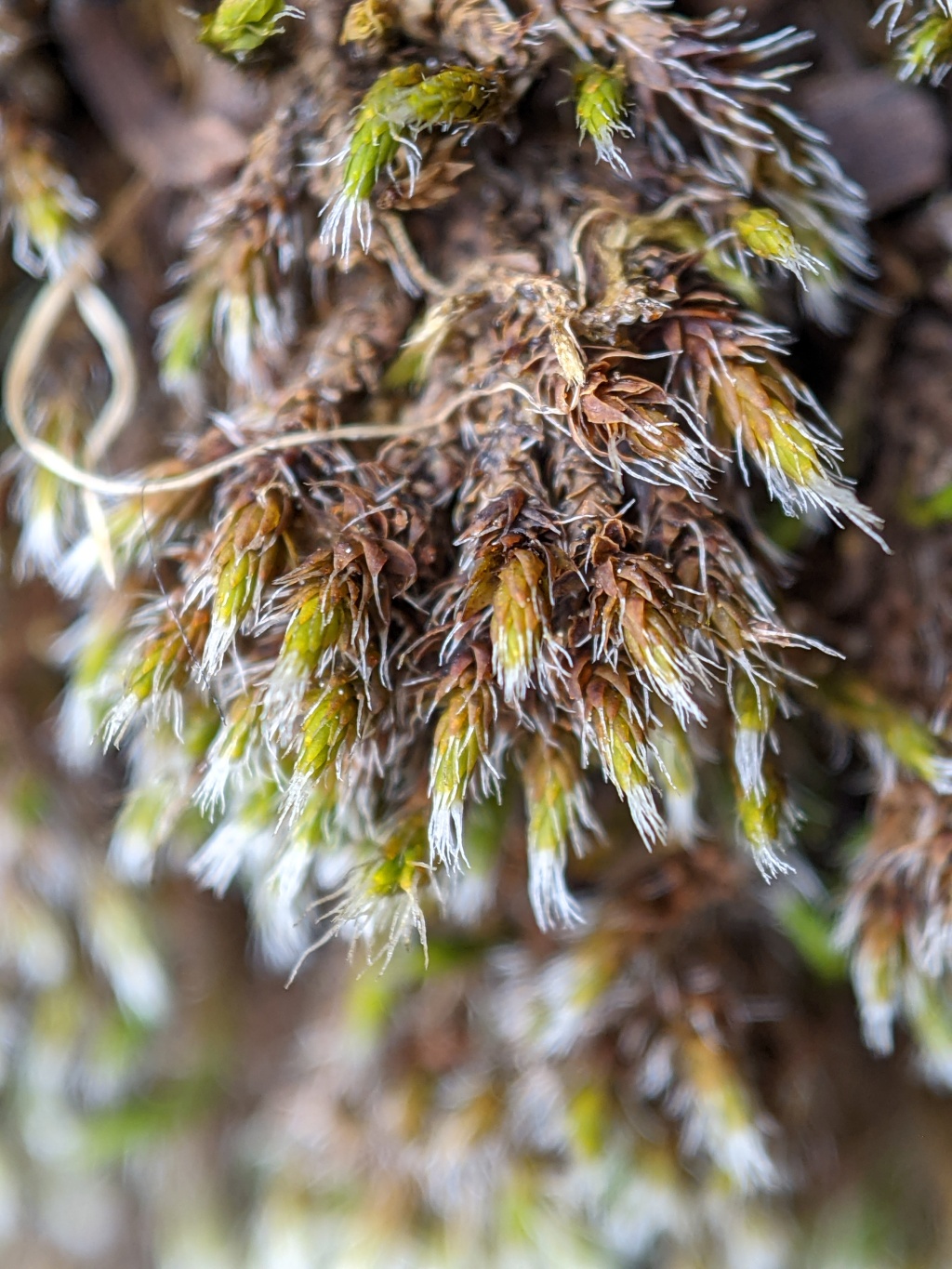Grimmia
Dioicous, cladautoicous or gonioautoicous. Asexual propagules absent. Tufts, cushions or mats on rocks or rarely tree bases. Stem simple or sparingly or dichotomously branched, with rhizoids restricted to base; central strand present or absent. Leaves lanceolate or oblong-lanceolate, falcate-secund (not in Victoria) or erect- to wide-spreading when moist, appressed, erect and straight or flexuose to contorted or crisped (not in Victoria) when dry; apex obtuse, acute or acuminate, with or without a hyaline hairpoint; hairpoint smooth or denticulate; costa subpercurrent (not in Victoria), percurrent or excurrent; margins entire, plane, recurved or incurved toward apex (not in Victoria), without a border; laminal cells quadrate to rectangular, sometimes oblate near base or linear near costa at base (not in Victoria), smooth, with sinuose, nodulose or straight walls, unistratose or multistratose; alar cells not differentiated or rarely inflated (not in Victoria). Acrocarpous. Seta straight or curved, smooth. Capsule erect to pendent, symmetric or asymmetric (not in Victoria), ovoid, obolid, ellipsoid, or globose, immersed or exserted, smooth or striate when dry, with or without (not in Victoria) an annulus. Calyptra mitrate or cucullate, smooth. Operculum rostrate or conic-apiculate, not attached to columella. Peristome of 16 teeth entire, perforate or split, or absent (not in Victoria).
Cosmopolitan, with around 80 species, but most diverse in northern temperate regions; six species in Victoria.
Grimmia as described here excludes former species segregated as the genus Dryptodon, that bear gemmae and have been shown to form a separate lineage that is potentially more closely related to Racomitrium (Hernández-Maqueda 2007; Hernández-Maqueda et al. 2008a, 2008b). Other segregate genera, namely Coscinodon and Hydrogrimmia, are both derived from Grimmia ancestors and included within Grimmia (Hernández-Maqueda 2007; Hernández-Maqueda et al. 2008a, 2008b). Comparison of phylogenies based on nuclear ITS DNA sequence to chloroplast DNA phylogenies suggest that some of the lineages of Grimmia may have been derived from hybridisation (Hernández-Maqueda et al. 2008b). Under this scenario, the circumscription of Grimmia followed here, which is largely influenced by the chloroplast phylogeny, may be too simplistic and additional genera may need to be recognised pending confirmation of the evolutionary history of the group.
 Spinning
SpinningHernández-Maqueda, R. (2007). Incongruence entre señal morfológica y molecular: una nueva propuesta sistemática para el complejo Grimmiaceae-Ptychomitriaceae (Bryophyta). PhD Thesis, Universidad Autonomoa de Madrid.
Hernández-Maqueda, R.; Quandt, D.; Muñoz, J. (2008b). Testing reticulation and adaptive convergence in the Grimmiaceae (Bryophyta). Taxon 57: 500–510.
Hernández-Maqueda, R.; Quandt, D.; Werner, O.; Muñoz, J. (2008a). Phylogeny and classification of the Grimmiaceae/Ptychomitriaceae complex (Bryophyta) inferred from cpDNA. Molecular Phylogenetics and Evolution 46: 863–877.


